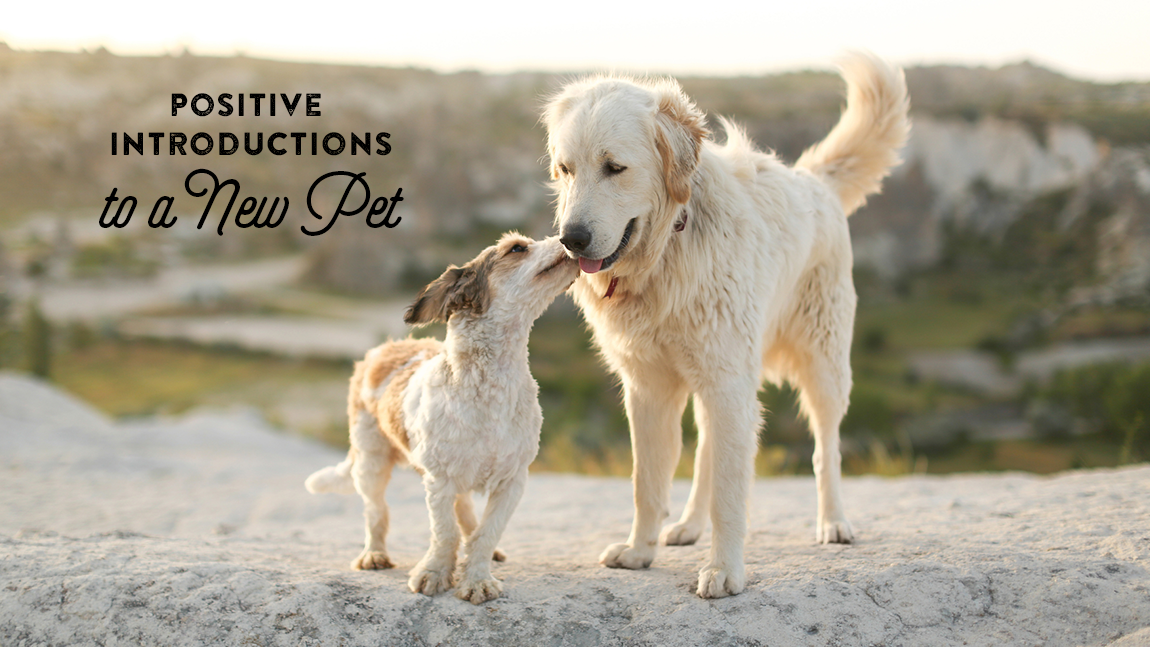By Shoshi Parks
There’s no bad time to consider adding a four-legged friend to your family.
Adding a new pet to your family is a joyous event, but truth be told, it is not always easy. This is particularly true if your current dog has a running history of being an only child. Just like children, dogs may feel jealous and guard their family’s attention when a new pet comes along. This may lead to squabbles and disruptions in normal routine and behavior.
These tips on introducing your dog’s new sibling will set them up for a lifetime of success and help make a happy home for all pets.
Nice to Meet You
Inviting an unfamiliar animal into your home may feel like a hostile takeover to your dog. This is your dog’s home after all; who is this stranger checking out his toys and stealing the best sleeping spots? If that same dog was a friend, the entire tone of his arrival changes: it’s a party, not an invasion.
Give your family dog the opportunity to meet the newest addition in a neutral location (like a park, a friend’s home, a pet supply store, etc.) prior to bringing him home. The larger the space, the better. Leash both dogs but don’t hold them, allowing them to drag on the floor. This allows you to use the leashes to separate the dogs if things go poorly, but prevents them from feeling trapped during their introduction.
Unless you know the new dog well, keep food and toys out of the initial introduction (to prevent competition over the resources) but cheerlead the dogs in happy, soothing tones.
Set A Positive Tone
Once your new dog is home, your pups will work out the details of their relationship amongst themselves. It may take time for their roles to solidify; remember that your new dog will be adjusting to an entirely new life and you won’t likely see the full extent of his/her personality until a few weeks into being settled.
While you don’t want to influence doggy dynamics too much, it is your responsibility to make sure both dogs are safe and comfortable. It’s also your responsibility to assure that your old dog’s life remains stable. If you continue to treat your “first born” as normal, your new pup will naturally slip into the routine.
There is a mountain of scientific evidence that proves that animals (including humans) learn better through positive reinforcement rather than punishment. With a new dog in the home, you will undoubtedly have to reestablish the rules of the house. The best way to do this is to reward – with praise, treats or play – for behavior you like and to separate your dog(s) from their object of desire for a quick time-out (about 30 seconds) if they are being too pushy.
The more your dog’s good behavior is rewarded with something motivating, the more frequently they will practice that behavior.
First Month Essentials
In the first weeks of your new dog’s arrival, practice these simple tips to set your pups up for long-term success:
- Feed your dogs in separate locations and supervise to prevent them from encroaching on each other’s meals.
- Prevent your new dog from taking over your old dog’s favorite spots. Provide your new dog with his own bed and cozy nooks.
- For the first few weeks, separate your dogs when no one is around to supervise. Allow your old dog to have access to his preferred spot in the home. Set up an equally attractive location elsewhere for your new pup.
- “High-value” objects such as bully sticks, pig ears, puzzle toys or favorite “squeakies” can become sources of tension. Put these away for your new dog’s first weeks at home and introduce them only with supervision, providing one for each dog in separate locations.
